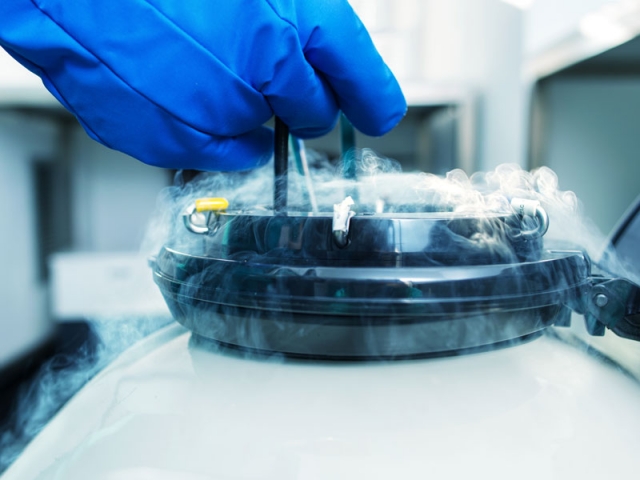
The importance of freezing techniques during COVID-19 pandemic
Índice
Embryo and / or eggs vitrification to tailor the most appropriate moment for the transfer.
The health emergency generated as a result of the impact of Covid-19 has caused an unprecedented total stop to activity in the field of assisted reproduction, following the safety recommendations of the main scientific societies. Although there is currently no evidence that the virus can be isolated in gametes and embryos, preventing pregnancy is suggested due to lack of knowledge of the negative effects of possible infection in the early stages of pregnancy.
We have had to adapt quickly to these measures, mainly with the goal of not starting new treatments until the alert ends, and at deferring transfer by cryopreserving oocytes or embryos for patients who had started their cycles prior to the publication of these recommendations.
In this situation, the cryopreservation techniques used daily in the laboratory have contributed to alleviate negative consequences for our patients.
Vitrification is the most widely used technique for freezing eggs and embryos at any stage. The main advantage is that it virtually eliminates the most important problem associated with freezing, which is the formation of ice crystals that can damage cell structures. For this, vitrification requires the combination of high concentrations of cryoprotectant, which are substances that act as antifreeze, and extremely rapid cooling that cause the sample to solidify, acquiring a glassy appearance that prevents crystallization.
Survival rates obtained, in both eggs and embryos, exceed 90%, and numerous recent studies report pregnancy rates comparable to those obtained with fresh oocytes and embryos, coinciding with what our results show after incorporating this technique at Instituto Bernabeu 15 years ago.
Instituto Bernabeu vitrification
Preserved eggs and embryos are stored in perfectly identified cryogenic containers with liquid nitrogen at -196 degrees Celsius until it is time to use them once the situation is resolved, or when the patient considers it appropriate since the cells would not be altered, even if they are frozen for years. Our gamete and embryo cryopreservation laboratory is highly specialized and complies with the strict standards set by UNE. Each sample from each patient has a unique location assigned in the cryogenic tanks, so that it is possible to unequivocally link the identification of the patient. Furthermore, following the European directives, the embryos are cryopreserved and stored in closed devices isolated from the rest of the samples, protecting them from possible cross-contamination, so that asepsis can be guaranteed.
For better control, these nitrogen tanks have self-filling systems to guarantee the maintenance of cryogenic temperatures and a 24-hour monitoring system 7 days a week.
Thanks to vitrification, laboratories have been able to respond to this crisis by preserving the biological material of our patients to try to achieve a pregnancy with the maximum guarantees as soon as the health authorities consider the pandemic to be controlled.
Jaime Guerrero,Embryologist and Director of Cryobiology and Donor Programs at Instituto Bernabeu
